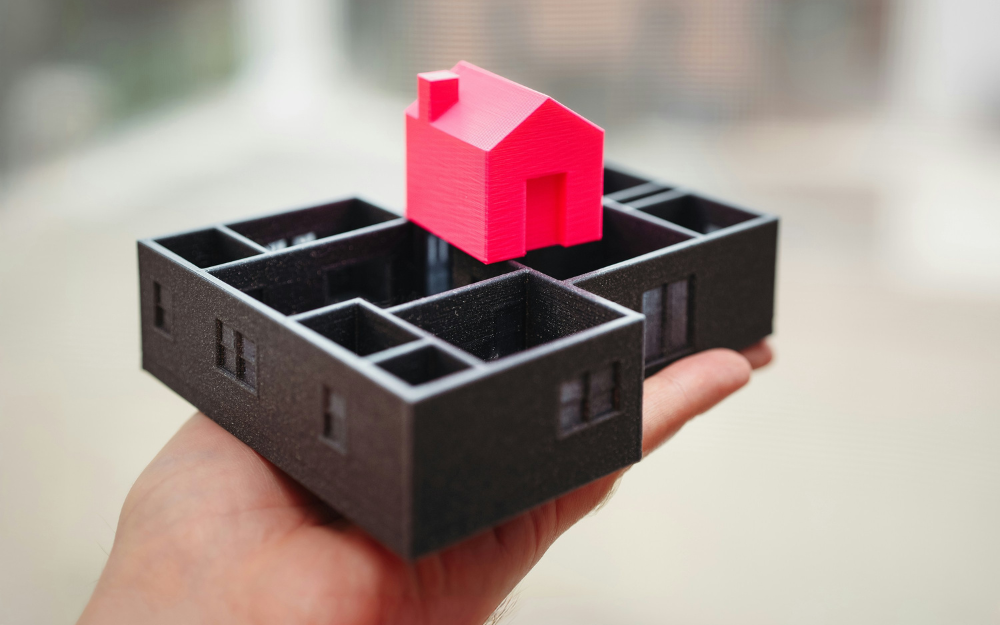Wintry weather. COVID lockdown. If you’ve found yourself spending more time at home these last couple of months, you might be starting to notice the areas of your house that need a bit of a freshen up. And now you’ve got the time to do something about it. Winter can be the perfect time for the home improvements to enjoy once the weather warms.
A recent survey by Houzz found that over 60 per cent of the 2200 Australians surveyed have continued their renovations even after the coronavirus was declared a pandemic. So whether your ambitions only extend to a fresh lick of paint, or you’re looking to take advantage of the Federal Government’s HomeBuilder subsidy package, the hibernation months can be a perfect time to get started on those projects.
No matter what you’re looking to achieve, here are some ideas for how to spruce up your place while it’s cold outside.

Interior painting
Sure it can be messy, but painting is one of the most cost effective and simple ways to transform the look and feel of your house. Light paint can brighten up a dark place in the wintertime and make rooms feel bigger. Painting the ceiling a lighter colour than the walls also give that feeling of height as well as light. Plus, that same dry interior air that can dry out skin in winter can also help a fresh coat of paint dry more quickly.
Storage
No buyer has ever looked at a new home and complained about the abundance of storage. And while a new butler’s pantry will add value to your home, there are other, less ambitious solutions. Built-in storage for the garage and under staircases is always popular, and built-in robes can maximise storage space. And for something more involved, attic areas can be transformed into storage areas with simple drop-down ladders – though do check with a professional that your roof can support the structures needed. Just beware: if you have space… you will fill it.
The great outdoors
Adding an outdoor kitchen or a barbecue area can raise the value of the property, but a refresh to the front yard – often the first thing a buyer notices – can too. Repainting the fence or getting some new plants in the ground in time for spring can be the little touch up that’s a lot easier than extensive landscaping. Opening the inside of your house to the outside – either through installing new doors, or changing your garden orientation – can dramatically change an area.
Kitchen and bathroom
Since the days we used to gather around a crackling fireplace, the kitchen has always been the warm heart of the home. From large renovations to small upgrades, an improved kitchen makes winter more enjoyable and your house – if you don’t over-capitalise – more valuable.
According to the Housing Industry Association’s (HIA) 2019 Kitchens and Bathrooms Survey, the average cost for a full kitchen renovation is $26,280, not including appliances. Some improvements you could do yourself include replacing visible but easily accessed areas like the backsplash, countertops, and cabinet fronts or handles. Repainting walls, changing kitchen and bench lighting, retiling or repainting tiles with tile paint could be your next step.
We use our bathrooms multiple times a day, and a warm shower first thing in the morning is what makes winter survivable. Perhaps now could be the time to turn that shower into a nice, long bath? The HIA found bathroom renovations cost $17,522 on average, and if you’re fully renovating a bathroom, a lot of that budget will go towards labour costs. A retrofit, which maintains the positioning of key items like a vanity, shower and toilet, could help reduce those costs. But labour is a worthwhile investment. Master Plumbers Australia and New Zealand have found that botched DIY jobs have increased since the COVID-19 restrictions.
If you’re looking for something eye-catching but more DIY, consider retiling or re-grouting your old ones, introducing plants to the bathroom, fresh painting or adding mirrors to increase light and a feeling of space.
Lighting and insulation
Lighting makes a wintry house feel warm and open, and it can improve energy efficiency – saving you money. Winter brings less daylight, which means more electric lighting. But replacing blown globes – or all globes – with energy efficient ones is an easy change-up and saves on bills at the same time.
The right insulation can save up to 45-55% of heating and cooling energy and keep you up to 5 degrees warmer in the winter months. For ceilings, reflective and bulk are the most common types of insulation. Reflective insulation is mainly laminated foil sheets which prevent heat loss, while bulk insulation traps air in tiny pockets to slow down the flow of heat. For wall cavities, loose-fill insulation can be pumped in. And for your windows, consider adding double glazing or energy efficient glass.
Flooring
If you are thinking of selling when the spring selling season arrives, here’s a final area you might have overlooked – the very ground you’re walking on. Buyers like the flow-through effect of continuous flooring, and your house and rooms will appear larger. If your house is a mish-mash of floorboards, tiles and carpet, the home can feel disjointed.
If you’re looking to keep the house warm, underlay beneath carpets, laminate or wood flooring can help to regulate the temperature, and underfloor heating is an increasingly popular home improvement.
Sometimes those winter months feel like a time for being a homebody and hibernating. But that home time can be put to great use – you’ll thank yourself come spring.
Source : Your Loan Hub August 2020
(C) Advantedge Financial Services Holdings Pty Ltd ABN 57 095 300 502. This article provides general information only and may not reflect the publisher’s opinion. None of the authors, the publisher or their employees are liable for any inaccuracies, errors or omissions in the publication or any change to information in the publication. This publication or any part of it may be reproduced only with the publisher’s prior permission. It was prepared without taking into account your objectives, financial situation or needs. Please consult your financial adviser, broker or accountant before acting on information in this publication.
Important: Any links have been provided with permission for information purposes only and will take you to external websites, which are not connected to our company in any way. Note: Our company does not endorse and is not responsible for the accuracy of the contents/information contained within the linked site(s) accessible from this page.


